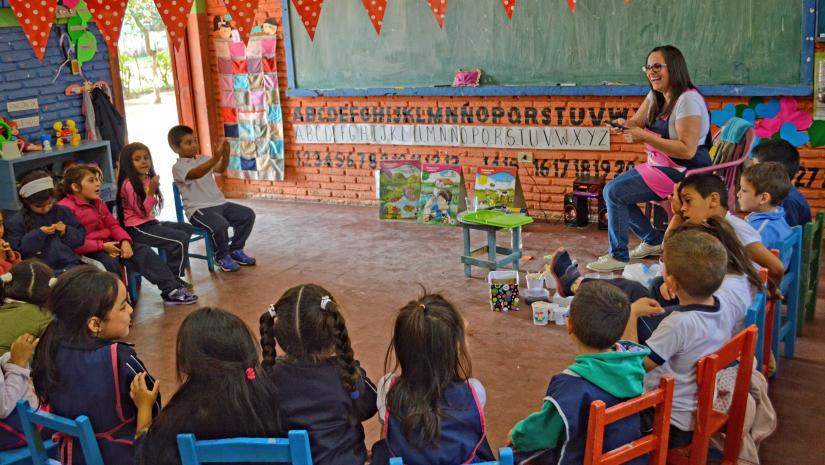Tikiciencias – A bilingual sciences model
Just like math, learning natural sciences at an early age may help develop many other competences years down the road. And yet, there is still not enough evidence on how to teach them effectively to young children. Tikiciencias presents a quality alternative to the way science is taught. And it does so using simple, low-cost tools that are accessible for teachers regardless of their knowledge or expertise. Tikiciencias is innovative because students can learn by listening to pre-recorded lessons in Spanish and Guarani and are encouraged to participate actively, positing hypotheses and carrying out simple scientific experiments. Tikiciencias uses simple technologies adapted to a bilingual context in a bid to close the access gap in quality science education. It is a sister innovation of Tikichuela, a renowned, successful, international award-winning program.
Problematic
UNESCO’S 2015 TERCE tests shed light on a troubling reality: on average, Paraguay’s boys and girls get low scores on sciences. If the country and the region at large look forward to having citizens avid to participate in science and technology projects, efforts must be made to sow the seeds at an early age, using interactive strategies that go beyond memorization and repetition. The fruits of these efforts should become evident in their future decisions and goals.
Solution
Inspired by the success of Tikichuela, Tikiciencias seeks to reformulate science teaching to young children, adding interactive features that invite boys and girls to explore science subjects and using teaching criteria based on research. The program transmits over the radio 64 pre-recorded audios that guide teachers in the implementation of activities and scientific experiments in class. Teachers were trained in the program’s implementation and were assisted by other teachers and provided with classroom materials and science kits.
Evaluation and Impact
To evaluate Tikiciencias, 294 schools in Caaguazú, Paraguay, were randomly allocated to two groups. Of that total, 147 schools received the program’s material, while the rest carried on with their traditional methods. Researchers were keen to find out if students participating in the program were getting better results in an oral exam on subjects such as physical sciences and sciences of life and of Earth and space. The first round of results indicates that the program did have a positive impact, improving children’s learning of sciences and the time teachers devote to train on teaching these subjects.
